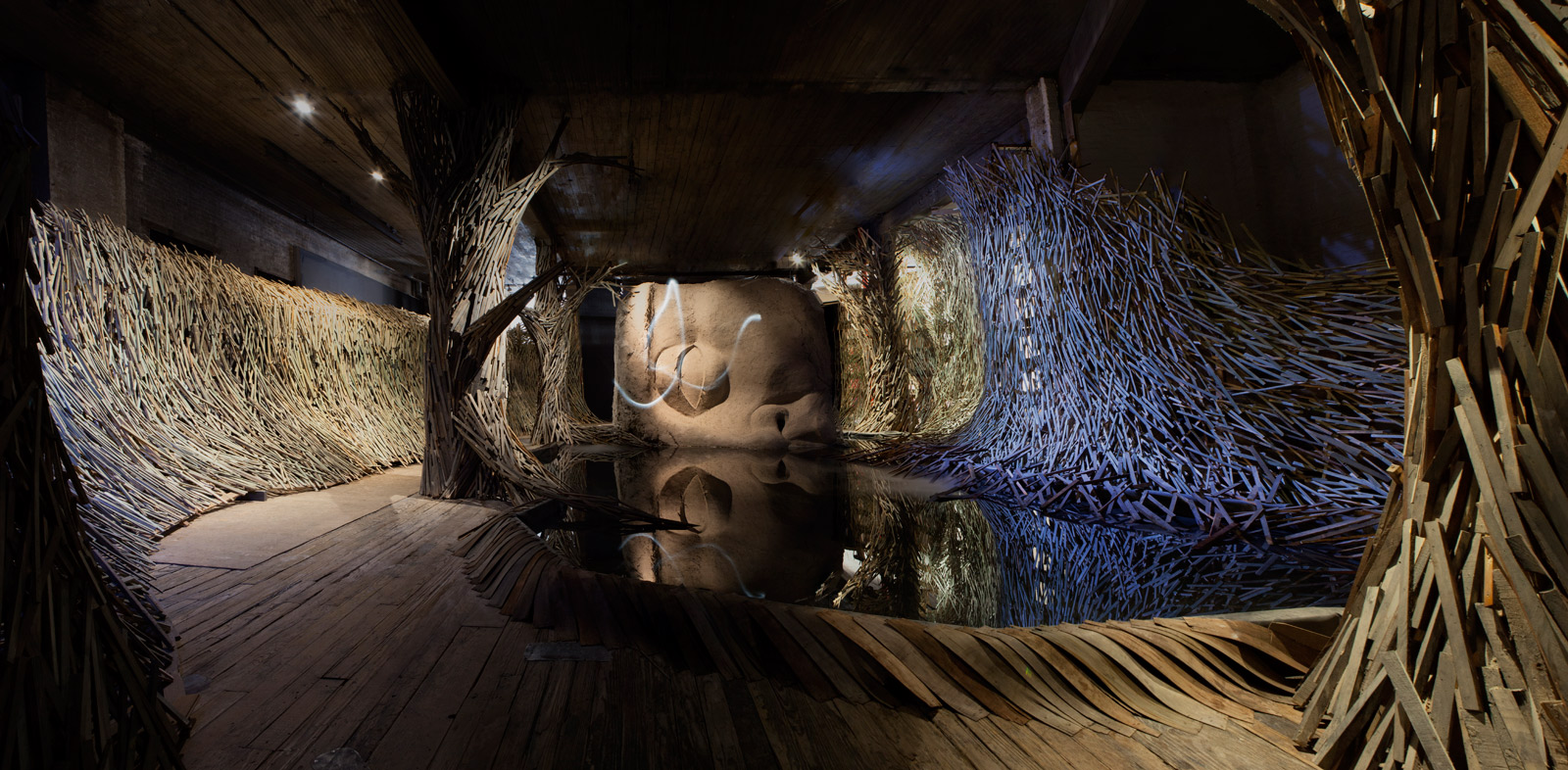Prune Nourry’s Immersive “Anima” Exhibition at The Invisible Dog
Turning a contemporary Mayan myth into a multi-sensory walk-in sculpture


For eight years now, sculptor Prune Nourry has been fascinated by what she refers to as “the frontier between the human and the animal.” This exploration, as well as the concept of soul, has infused her works from inspiration to execution. Her latest exhibition, “Anima” at Brooklyn’s The Invisible Dog, continues along this path—in grand form. The installation is one large-scale immersive experience, composed of multi-sensory pieces from water to wood and even a hologram. Nourry delivers a powerful, magical experience that “appeals to emotions so that we can then appeal to the intellect,” she explains to CH. It shouldn’t be surprising then, to learn that the exhibition was produced in collaboration with an anthropologist and a magician.

It was a magician, as well, that triggered the relationship that would lead to this show. Through David Blaine, Nourry met anthropologist Valentine Losseau—a woman who had also spent years studying the frontier between animality and humanity. They decided to imagine a work together at the cross of art, anthropology and magic. Losseau had lived in the Mayan jungle with the Lacandon people (the last remaining tribe still living in harmony with the forest) for eight years. She shared her stories with Nourry and two—one of which stands as a contemporary Mayan myth—would fuel the dream-like “Anima” presentation.

The first story is of an old Lacondon man named K’in Obregon who died two years ago. “Valentine spent over six years working with him,” Nourry says. “The story is that he was brought to Paris in 1937 to be shown in the Universal Exhibition. He was kept inside a human zoo while there. My first project in 2006 was about a human zoo and I felt like Valentine was talking about something I had already worked on.” As the story goes, Obregon was returned to Mexico but died several years later—his death was announced, accepted and his community moved forward. Several years after his death, Obregon returned to life and was again became involved in the community. Whether his death actually occurred can be debated, but his long life after its acceptance cannot, as Nourry herself met the man before his death. Obregon’s story is the crux of “Anima.”

The second story Losseau shared with Nourry explains “Anima’s” visual language. “She recorded a young man telling her that in his last dream he transformed into a fish. He was in a pond and he stepped out to get some air and he saw his father, who was transformed into a wild pig, walking forward to get a drink of water. Valentine then walked three hours and went to the house of the man’s father. She asked him to tell her about his dream and he told the exact same story: he was a wild pig and he saw his son as a fish as he was stepping to a pond to drink some water. For the Mayans, there is no magic behind this. It is normality,” Nourry recounts. With this as impetus, Nourry invited magician Etienne Saglio and scenographer Benjamin Gabrié to join in the collaborative construction. “To me, as a sculptor, the notion of soul is very important. It is when I know a sculpture will be finished. The sculpture is looking at me,” she concludes regarding her work. But to expound about that for “Anima,” she’s drawn from the soul of an anthropological story and had it animated by a magician and united by a scenographer.
“Anima” will run through 14 April 2016 at The Invisible Dog, 51 Bergen St, Brooklyn.
Lead and last image by JR, all other images by Erika Hokanson












